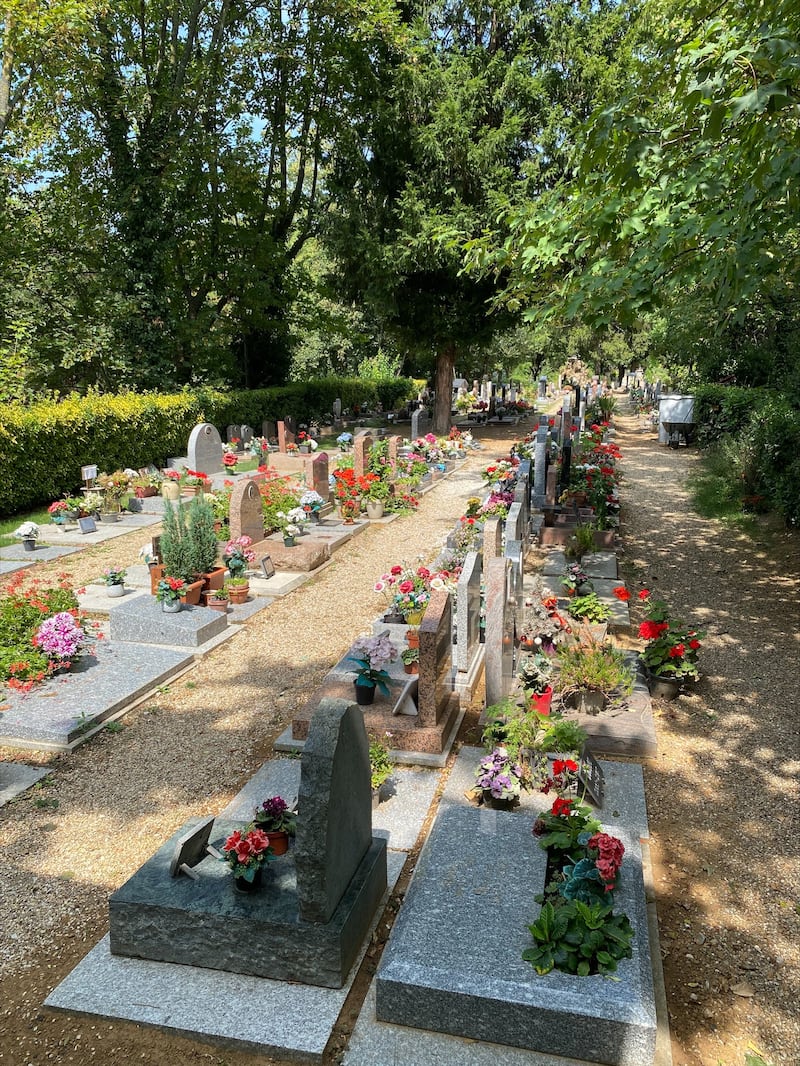Finding myself in Paris on All-Ireland Sunday, I headed for the nearest Irish bar, the well-named Galway Pub, on the Quai des Grands Augustins. But not having a dog in the fight, or even a neighbour’s dog to cheer for or begrudge, I was soon distracted by the other sporting drama about to unfold nearby.
Outside, on the sun-drenched banks of the Seine, locals and tourists were taking up positions for the imminent arrival of the Tour de France. Even the twin towers of Notre Dame seemed to peer down expectantly at the corner of Boulevard St Michel, from where the peloton would make its formal entry into the city centre.
It was a balmy 27 degrees along the river, whereas in the pub’s sweaty interior, the combined warm fronts of Kerry and Galway supporters made it feel at least 10 degrees higher.
So I fled to the cooler terrace tables eventually: one eye on the nearest TV, the other on the mounting excitement at the corner. And hovering between these two great events, I was struck by the culture clash — or the clash of cults — involved.
READ MORE
Certainly, watching GAA in such circumstances seems to imply almost religious devotion. My occasional trips from the sunny riverbank to the pub’s dank interior offered an insight into what it must have been like, in Penal-Law Ireland, to attend mass in a cave.
Mind you, at least the GAA devotees got a full 70-minute service. For those worshipping the other spectacle, by contrast, the climax was a fleeting affair. About 20 minutes after the football ended, the tour swept out from Boul’ Mich on to the riverfront and was gone within seconds.
The surviving competitors seem to have become supermen en route. Or at least, in keeping with Flann O’Brien’s molecular theory, the men and bikes seem to have merged personalities
But if you have watched the three-week preamble on TV, following the cyclists up and down Alps and Pyrenees, over dusty cobbles in Picardy, and through the picturesque pastureland of central France, it is nevertheless an electrifying moment when they finally pass through your stationary world.
The surviving competitors seem to have become supermen en route. Or at least, in keeping with Flann O’Brien’s molecular theory, the men and bikes seem to have merged personalities. Even the odd straggler, cut off by puncture, crash, or self-sacrifice for an important team-mate, passes in a flash of unfeasible speed.
The other insight from seeing the event in person is the extraordinary number of motorised vehicles that accompany it.
These range from the race car, motorbike cameras and support teams to the various people — central to all big events — whose only function seems to be throwing shapes. None are on bikes. The defining smell of the Tour de France, I belatedly realised, is petrol.
The day before, another sporting pilgrimage of sorts had taken me to Asnières-sur-Seine. A suburb of northwestern Paris, also on the Seine, Asnières is best known as the backdrop for some famous post-Impressionist paintings, by Van Gogh and Georges Seurat. But it is also home to Paris’s most exclusive animal cemetery, the Père Lachaise of pets.

Among the celebrity dead there is Rin Tin Tin (1918-32), a German Shepherd who got his big break in movies when standing in for a stage-struck wolf and went on to become such guaranteed box-office that he was known in Hollywood as the “mortgage lifter”.
Also there is “Barry” (1800—1814), a St Bernard whose heroic career in mountain rescue is summed up by an epitaph that could be the tagline of a movie: “Il suiva la vie à 40 personnes. Il fut tuè par le 41ème.” (“He saved the lives of 41 people. He was killed by the 41st”). Like many movie tagines, this one is a lie. Barry survived all his rescue operations and died of natural causes.
There are many cats buried at Asnières too, and at least one hen. There is even a bee (”Bee Nfluencer 2019—2021″), under a suitably tiny headstone, although it seems she too was a celebrity, with 250,000 followers on Instagram.
But I visited Asnières mainly to pay respects to Troytown (1913—1920), the great Meath racehorse who, like his two-legged compatriots Samuel Beckett and Oscar Wilde, has earned a permanent resting place in Paris.
Despite a habit of ploughing through fences rather than jumping them, he won several big races including the English Grand National and the Paris Steeplechase. Those he didn’t win included his last, when he returned to Paris in 1920 and took a shortcut once too often.
Unlike Beckett, he had tried again, failed again, and failed worse. Alas, his grave is also a bit neglected these days, piled high with leaves and sprouting shrubbery. Then again, this may be apt. Perhaps there is molecular interchange at work here too, as the now-immortal horse merges with at least one of the obstacles he had so much trouble jumping.













